For this second installment of my expanded review of Les Misérables, the 1934 French epic courtesy of Eclipse Series 4: Raymond Bernard, I’d like to focus more on the atmospherics and less on the narrative storyline itself. As I noted in Part 1, Bernard’s adaptation of the voluminous Victor Hugo novel took the form of a three-part mini-series of films. As with most Part 2’s of 3-part trilogies, Les Misérables: The Thenadiers serves as a connector between the impressive opening chapter and the grand finale, setting up the ultimate showdown and basically moving the story along without drawing down too many conclusions.
Anyone new to Les Misérables must be asking at this point, what are “Les Thenardier?” The title of this second installment in the series derives from the name of the family that took temporary custody of Cosette, the beleaguered daughter of Fantine, female protagonist of Part 1 who unfortunately did not survive long enough to make it into Part 2. The Thenardiers also take on the role of chief villain in this film, briefly relieving Inspector Javert of that burden, though he has a critical part in the ever-unfolding plot towards the end of the movie. Thoroughly craven and corrupt, the Thenardiers operate an inn that happens to be visited one night by Jean Valjean, who’s now assumed a new identity as Monsieur Fauchelevant, since his previous pseudonym as Mayor Madeleine was blown once and for all at the end of Part 1.
Les Thenardier begins with a festive street carnival scene that just happens to take place at Christmas-time, which only makes my selection of this film all the more appropriate to the season. Here we’re re-introduced to Cosette, the adorable long-suffering waif subjected to whatever cruel whims the Thenardiers wish to inflict upon her at any given moment. The opening tableau sees her ordered to fetch some water from a nearby stream, located unfortunately in the deep dark depths of a nearby forest. The set-up reportedly had a direct influence on a similar situation that Walt Disney used in Snow White, created a few years later, when she had to make a similar run of the gauntlet through a scary woodland scene.
In the first of a great many uncanny coincidences that unfold over the course of Les Thenardier, Cosette meets up with Jean Valjean, her eventual benefactor and savior, who relieves her of the burden of carrying a bucketful of water far too heavy for her petite frame to bear. She guides him back to the inn she calls home, where he sizes up the situation and makes the necessary moves to become her guardian, though in a manner that leaves the venal Thenardiers lusting and plotting for revenge.
After Cosette is taken into the custody of M. Fauchelevant/Jean Valjean, the story jumps ahead several years to show Cosette’s emergence as an attractive and headstrong young woman of 16, intent on marriage and the driving force for most of the conflicts that take place over the course of the rest of the film. Cosette turns out to be the spitting image of her mother (though they are not played by the same actress) as she wins the heart of another young fop who dabbles in the revolutionary politics that were in vogue in early 1830s France.
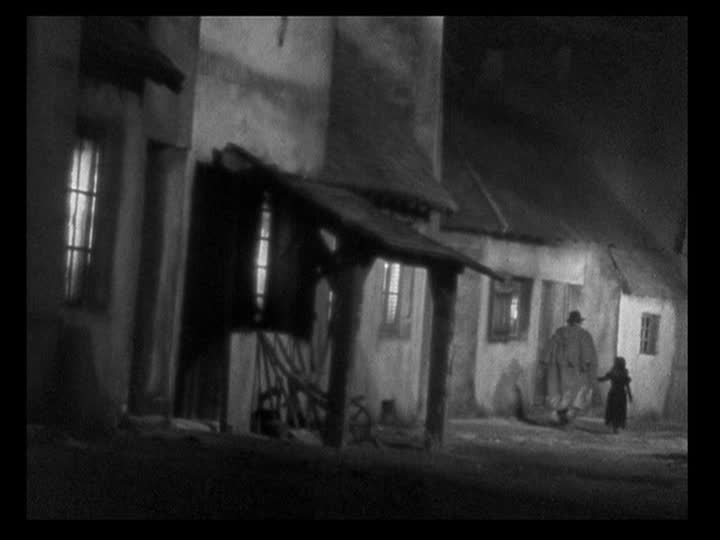
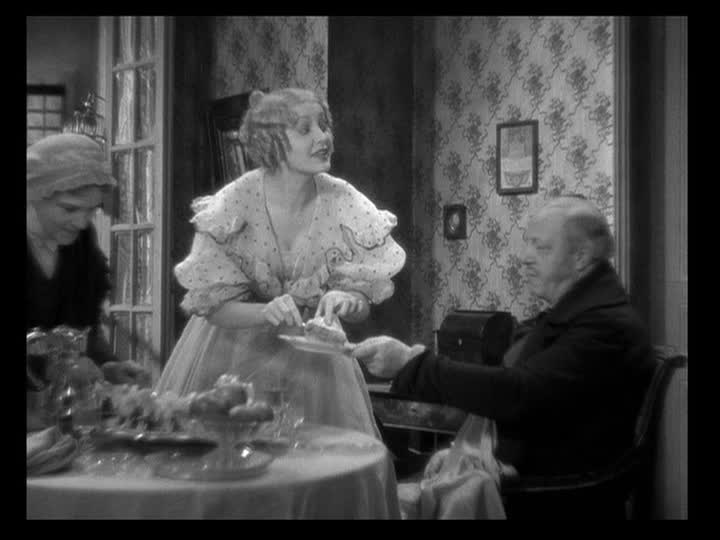
Marius, her would-be suitor, is the grandson of a stodgy old Royalist, whose father happens to have been fatally wounded in the Battle of Waterloo and attended to in his dying moments by none other than the scoundrel Thenadier, who was only on the scene to pickpocket the corpses of soldiers killed in combat. This implausible but delightfully clever plot construction provides a good example of the kind of maneuvers that Victor Hugo wove into his novel. Rather than recount them all here, I’ll just recommend that you watch the thing for yourself. A realist critic could easily shoot holes in the narrative, but that’s beside the point. Les Misérables is built on the premise that life does indeed confront us with incredible scenarios that seem like statistical longshots until they become part of our reality.
As we step away briefly from the central conflict involving Jean Valjean and his endeavors to provide for his beloved Cosette, we see Les Misérables take on the broader topic of France’s political destiny, as the struggle between upper and lower classes becomes more prominent. Marius is obviously more of a dilettante than a true revolutionary, but Cosette, despite the injustices she suffered in her early childhood, cares not a bit about that. Still, the fires of revolt begin to heat up throughout the running time of Les Thenardier, though they won’t burst into full flame until the epic reaches its conclusion. This film relentlessly builds instead toward a final showdown between the murderous plotting of the Thenardiers to exact vengeance against their unwitting but ever-vigilant nemesis Jean Valjean.
Of course in a tale as traditional and broadly appealing as Les Misérables, the malicious scheme must ultimately be foiled, but the manner in which that happens is worthy of being relished, as we see Valjean erupt in titanic fury when a gang of petty thieves and cut-throats are enlisted by M. Thenardier to take him out. It’s one of the most enjoyable brawls I’ve ever seen in a movie from this era, and here’s a clip to let you in on the fun:
Beyond the plot developments and memorable confrontations, Les Thenardiers excels in creating a dense and emotive cinematic environment as we travel from the depths of blighted slums to the splendor of sumptuous salons and courtyards. The set designs and costumes carry a weight of authenticity that seems nearly impossible to match nowadays, even with the relatively lavish budgets and other resources that could be brought to the task in our times. On top of that, the casting is pitch-perfect; no one is faking French accents here or mugging for the camera with an eye toward out-performing any of their predecessors in the various roles.
One gets the sense that the artistic directors didn’t have to stretch terribly far to create the immersive environment. Filmed around 80 years after Victor Hugo’s novel debuted, France had yet to undergo the kind of technological and cultural transformations that now make the epoch of Les Misérables seem like a long-lost dream.
Though clearly intended to be viewed as part of the larger whole that is Les Misérables, Les Thenardier still manages to deliver a satisfying story arc on its own terms as we see Cosette come of age and Valjean/Fauchelevant come to grips yet again with a disturbing element of his past. The film concludes with the two of them witnessing a grim procession of prisoners, chained to rustic wooden carts, as they’re being hauled off to hellish penal colonies. While Cosette questions the humanity of the wretches en route to oblivion, Valjean is all too acquainted with the destination which awaits them, that he clearly recognizes could still be his dwelling place if not for a few random twists of fate.
The stage is now set for all manner of situations to arrive at their culmination: Valjean must still face the wrath of Inspector Javert, who knows the escaped convict is still out there evading the full verdict of justice that awaits him; Cosette is betrothed to Marius, though obstacles stand between them on his side of the family ledger; and the smoldering fire of armed revolt against the post-Napoleonic regime looms in the background, threatening to erupt into an out of control blaze that will disrupt all the careful plans of lovers and businessmen alike. We’ll see how it all turns out in Les Misérables Part 3: Liberty, Sweet Liberty!







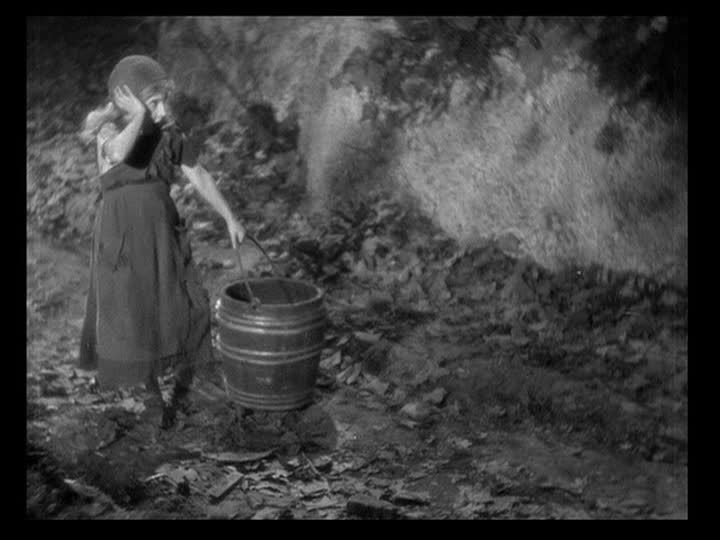



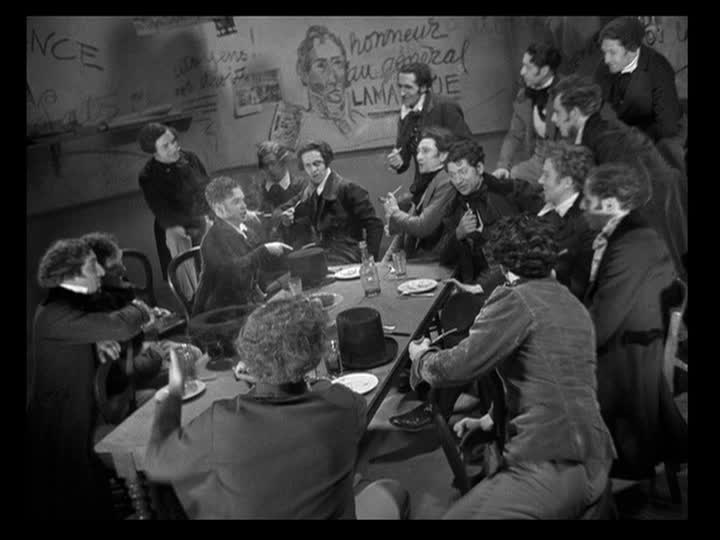

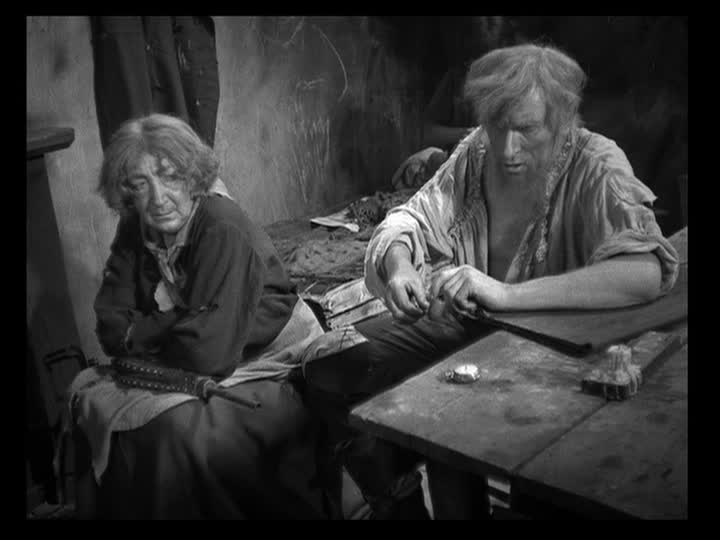

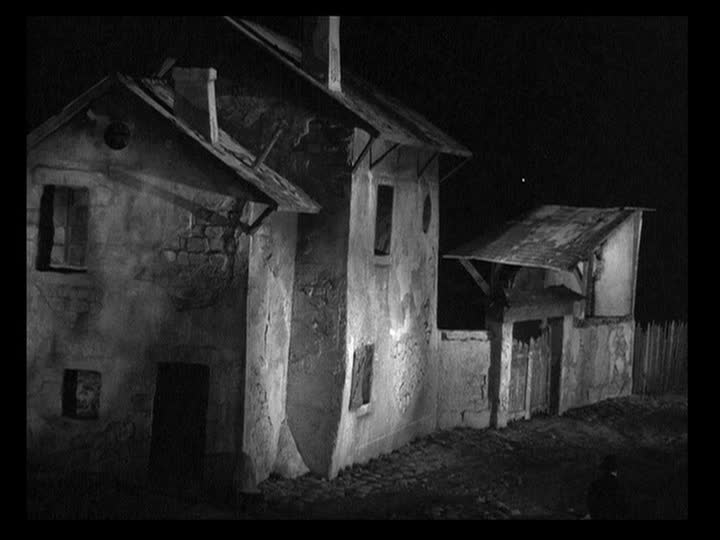
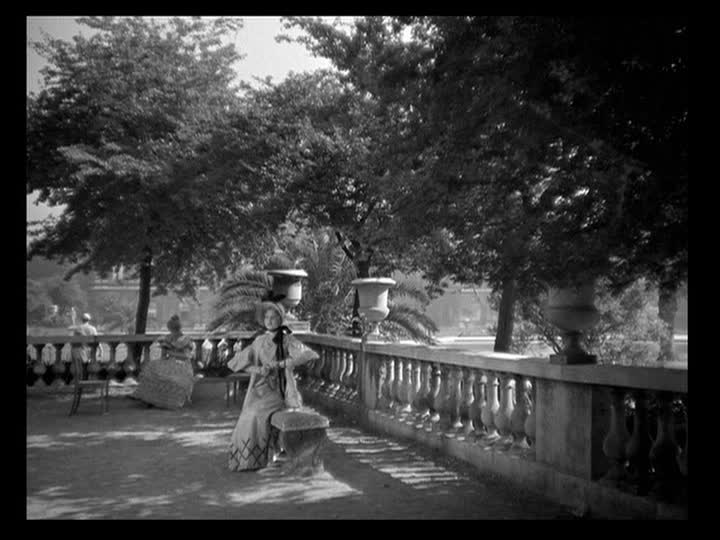



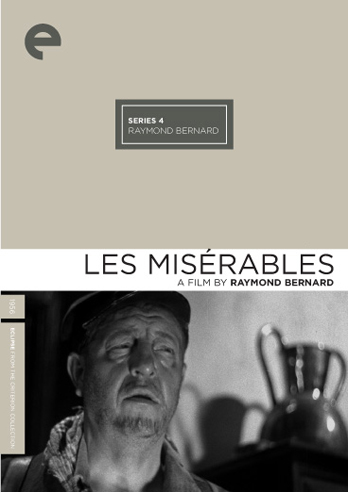

![Bergman Island (The Criterion Collection) [Blu-ray]](https://criterioncast.com/wp-content/uploads/2022/11/bergman-island-the-criterion-collection-blu-ray-400x496.jpg)
![This Is Not a Burial, It’s a Resurrection (The Criterion Collection) [Blu-ray]](https://criterioncast.com/wp-content/uploads/2022/11/this-is-not-a-burial-its-a-resurrection-the-criterion-collection-blu-ray-400x496.jpg)
![Lars von Trier's Europe Trilogy (The Criterion Collection) [The Element of Crime/Epidemic/Europa] [Blu-ray]](https://criterioncast.com/wp-content/uploads/2022/11/lars-von-triers-europe-trilogy-the-criterion-collection-the-element-of-400x496.jpg)
![Imitation of Life (The Criterion Collection) [Blu-ray]](https://criterioncast.com/wp-content/uploads/2022/11/imitation-of-life-the-criterion-collection-blu-ray-400x496.jpg)
![The Adventures of Baron Munchausen (The Criterion Collection) [4K UHD]](https://criterioncast.com/wp-content/uploads/2022/11/the-adventures-of-baron-munchausen-the-criterion-collection-4k-uhd-400x496.jpg)
![Cooley High [Criterion Collection] [Blu-ray] [1975]](https://criterioncast.com/wp-content/uploads/2022/11/cooley-high-criterion-collection-blu-ray-1975-400x496.jpg)
1 comment